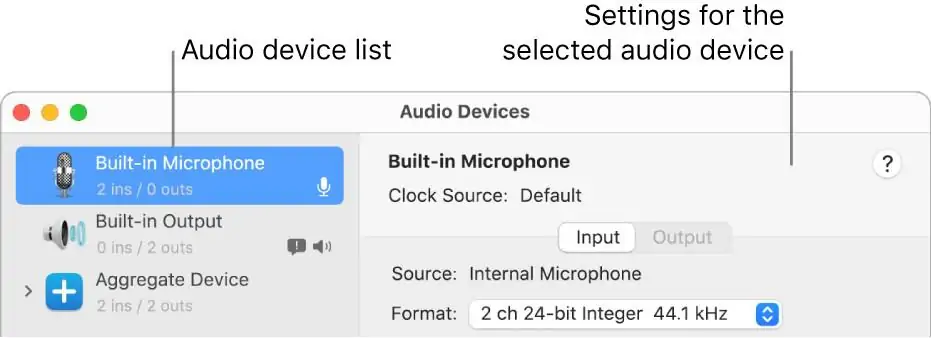
New MacBook Pro’s have built-in DACs (digital-to-analogue converter) built into MacBook Pro (14-inch, 2021) and MacBook Pro (16-inch, 2021) models supporting sample rates of up to 96kHz. These feature DACs that can convert up to 96kHz digital audio to analogue audio. You can connect an analogue device like headphones or speakers directly to the headphone jack on your Mac and monitor your audio at full resolution without needing an external DAC.
To set the sample rate for the headphone jack, use the Audio Midi Setup app, which is located in the Utilities folder of your Applications folder. For best results, the sample rate for the headphone jack should match the sample rate of your source material.
How to set up audio devices in Audio MIDI Setup

Use Audio MIDI Setup to set up audio input and output devices, such as microphones and multi-channel audio interfaces. You can also use it to route audio from iOS and iPadOS devices directly into your Mac.
Available settings in Audio MIDI Setup depend on the audio device you’re using. For example, you can adjust the volume for each channel your audio output device has available.
- Connect your audio devices to your Mac and, if necessary, install any software included with the devices.
- In the Audio MIDI Setup app
on your Mac, in the sidebar of the Audio Devices window, select a device.
Note: For iOS and iPadOS devices, first click Enable, then select the device. You may be asked to unlock your device with a passcode or to trust the device.
- Control-click the device, or click the Configure Selected Device pop-up menu
at the bottom-left of the sidebar, then choose how the device is going to be used:
- For sound input: Choose Use This Device for Sound Input.
- For sound output: Choose Use This Device for Sound Output.
- For playing system sounds: Choose Play Alerts and Sound Effects Through This Device.
- On the right side of the Audio Devices window, choose the options available for the device you selected:
- In most cases, “Clock source” is set to the default.
- Click the Format pop-up menu, then set the sample rate and bit depth. Make sure they match the appropriate settings for your audio device.
- If your Mac supports the hardware sample rate converter, the Hardware Rate Converter pop-up menu is available in the Input pane. When you choose Automatic from the pop-up menu, the hardware sample rate converter is turned on if the audio samples coming in are PCM and formatted according to the international standard IEC 60958-3. The hardware sample rate converter is turned off if the input stream is encoded. You can also choose Enable or Disable from the menu, to keep the hardware sample rate converter turned on or off.
- If software volume control is available for your device, the Volume sliders appear blue to indicate that they’re active. Drag the sliders to set the volume for each channel.
- To set up a surround (multi-channel) speaker configuration, click Configure Speakers, then set up the configuration.




